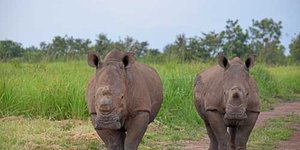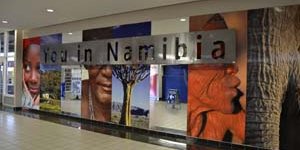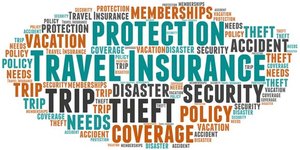Like this article?
Go on, give it a kudu!

Published on March 28 2013
Written by:
yourafricansafari.com
627 views
Sometimes it is not the lack of fitness that prevents people from reaching summit, it can also be the altitude sickness. The possiblity of reaching the peak mainly depends on how you cope with the altitute. There are things that you can possibly do to avoid the symptoms of acute mountain sickness when climbing Kilimanjaro.
How to Prevent altitute Sickness?
Altitude sickness is not only based on the absolute height you are at, it also depends on how fast you got there. There are a lot of things you can do before and during climd that can reduce the risk of altitute sickness symptoms.
Choosing the Kili Route:
A big factor in having good climb is choosing the right route to Climb Kilimanjaro. There are a huge number of tour operators; Kilimanjaro is so expensive, so it is easy to look for the cheapest deal.
The cheapest Kilimanjaro Climbs are also the shortest. However, most responsible tour operators do not offer four day climbs to people who have no previous experience at high altitude trekking and are not acclimatized.
The statistics from the registration books at Mount Kilimanjaro National Park indicate that of all climbers on five days routes, only little over a quarter reach the summit! All the five day routes offer an opportunity to add an extra day for acclimatization.
If you want to increase your chances of reaching the summit further, consider choosing one of the longer routes. (Just a hint, this is recommended for people who are used to camping out, if you are not and if you don’t like or don’t sleep well in a tent, then a longer Kilimanjaro Trek can have a negative effect.)
The right Operator for Kilimanjaro:
When comparing price for Kili climbs you will find huge differences between operators, there is temptation to look up for the cheap deal. However, the saying ‘you get what you pay for’ certainly holds true for treks on Kilimanjaro.
The quality of your guides, equipment, food, etc. is reflected in the price. The Operators who cut costs in every corner will not be able to offer you the care and equipment needed for a safe experience.
It is also worth noting that the low budget operators not only have lower success rates, there is also a big risk that something goes seriously wrong, and on Kilimanjaro that can be very dangerous.
What to do on Kili Climb?
”Slow and Steady” Pole pole (Swahili word), you will hear this word day to day from your guide. It is the most important thing to keep in mind during climb. No matter what you want or expect, you will be surprised HOW slow your guides make you walk, everything on Kili happens in slow motion.
You walk so slowly, the first days it seems ridiculous. You may even feel you just can’t walk that slowly. Do not be tempted into speeding up because others are walking faster. Another group overtaking? Let me them go! You will pass their tired bodies soon enough … There is nothing to gain on Kilimanjaro by being the first.
Has been on: 15 safaris
Your African Safari (YAS) is a safari-planning resource for anyone planning an African safari. It features information on over 2600 tour operators including company and vehicle descriptions, user reviews, safari itineraries and photos. It also features detailed information on 14 countries and 84 parks and game reserves.
© Your African Safari Ltd, All rights reserved.
Your African Safari is a safari-planning and safari review site. It was created to help support a healthy African wildlife population. All reviews are vetted before being approved and only ethical tours are published

Garamba National Park—an anchor of hope in the Democratic Republic of Congo
Published on January 09 2025
By: R.W.

Namibia imposes new visa requirements
Published on July 25 2024
By: yourafricansafari.com

Do I really need travel insurance or travel protection for my safari?
Published on July 30 2024
By: yourafricansafari.com